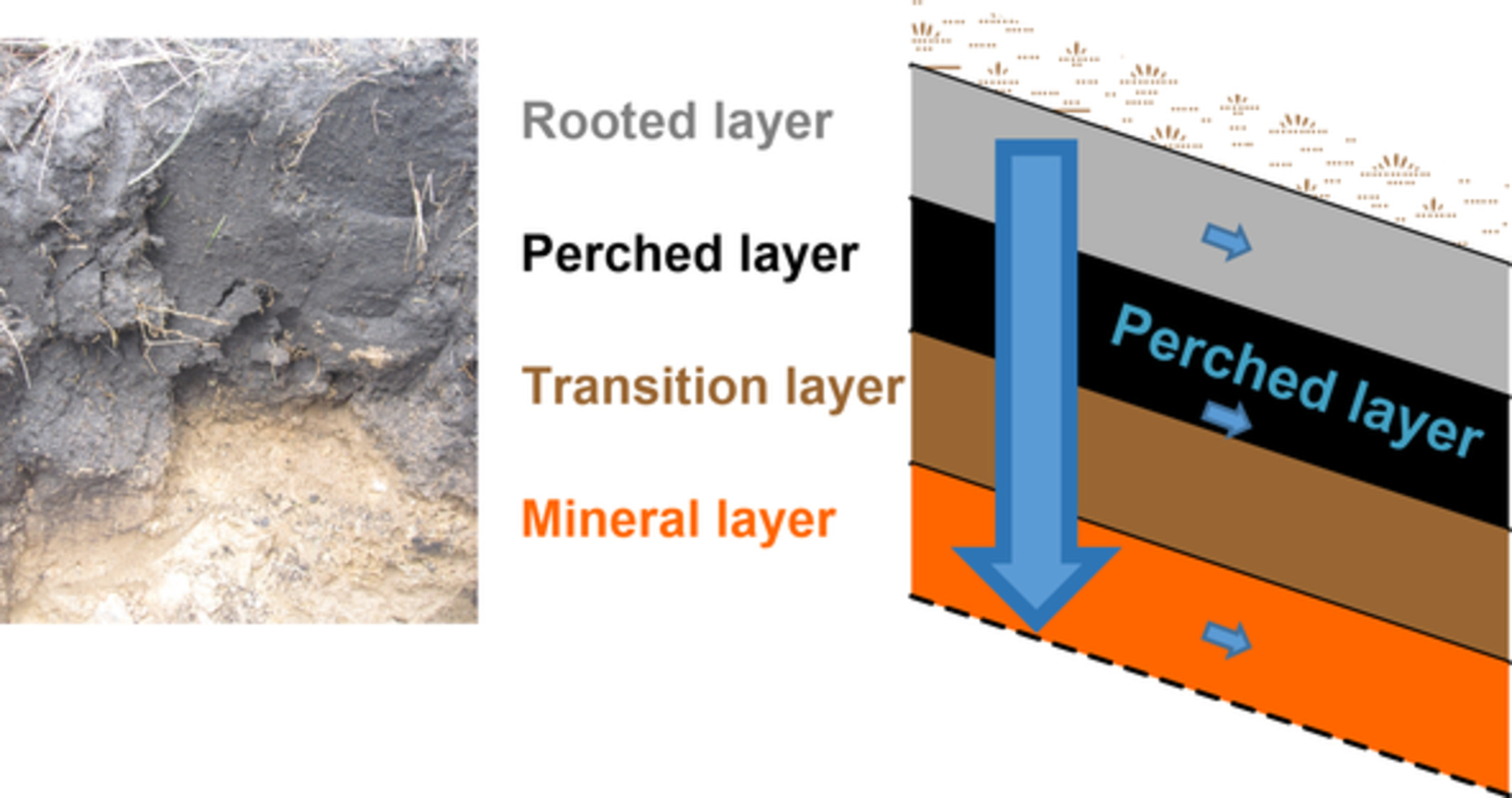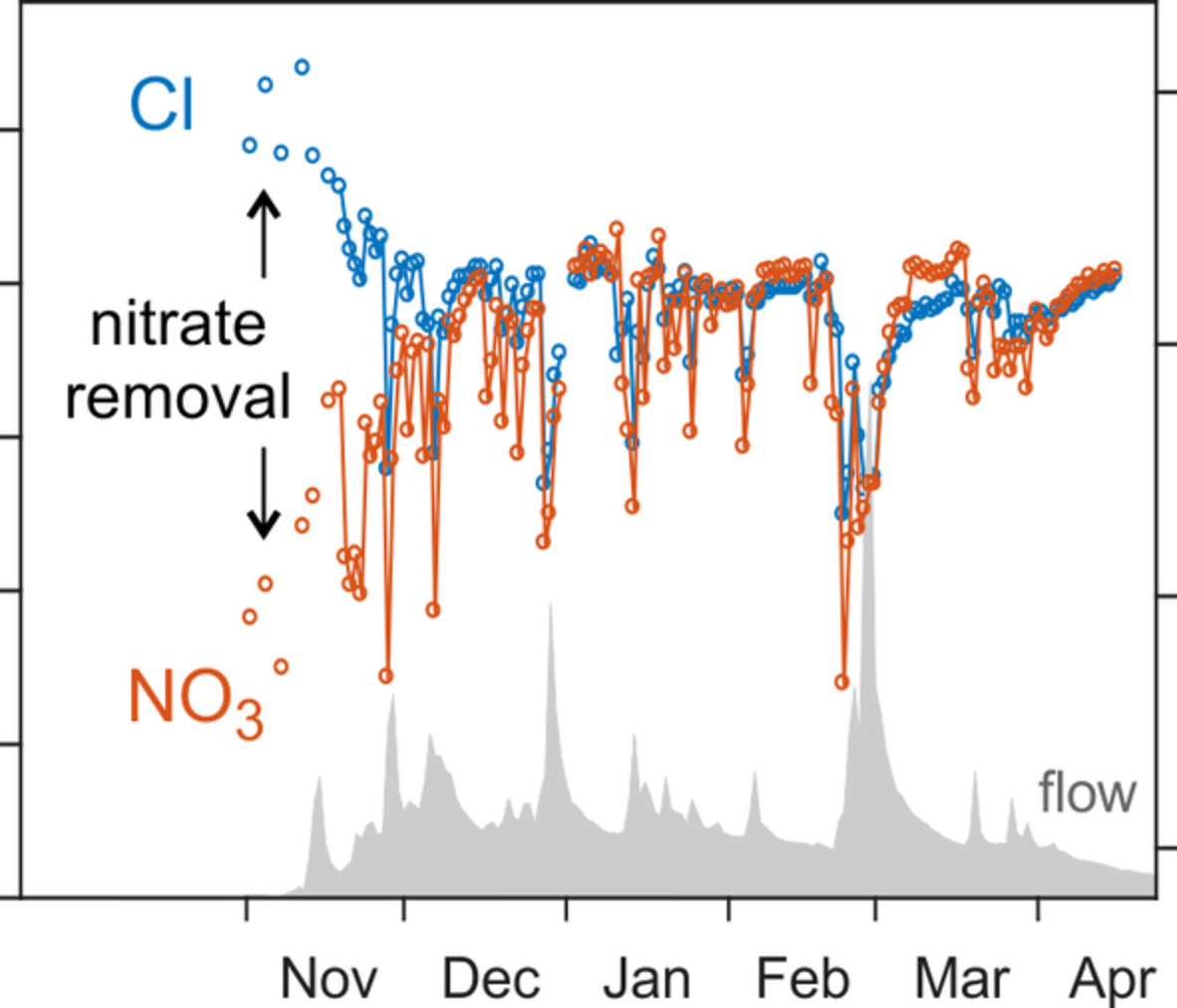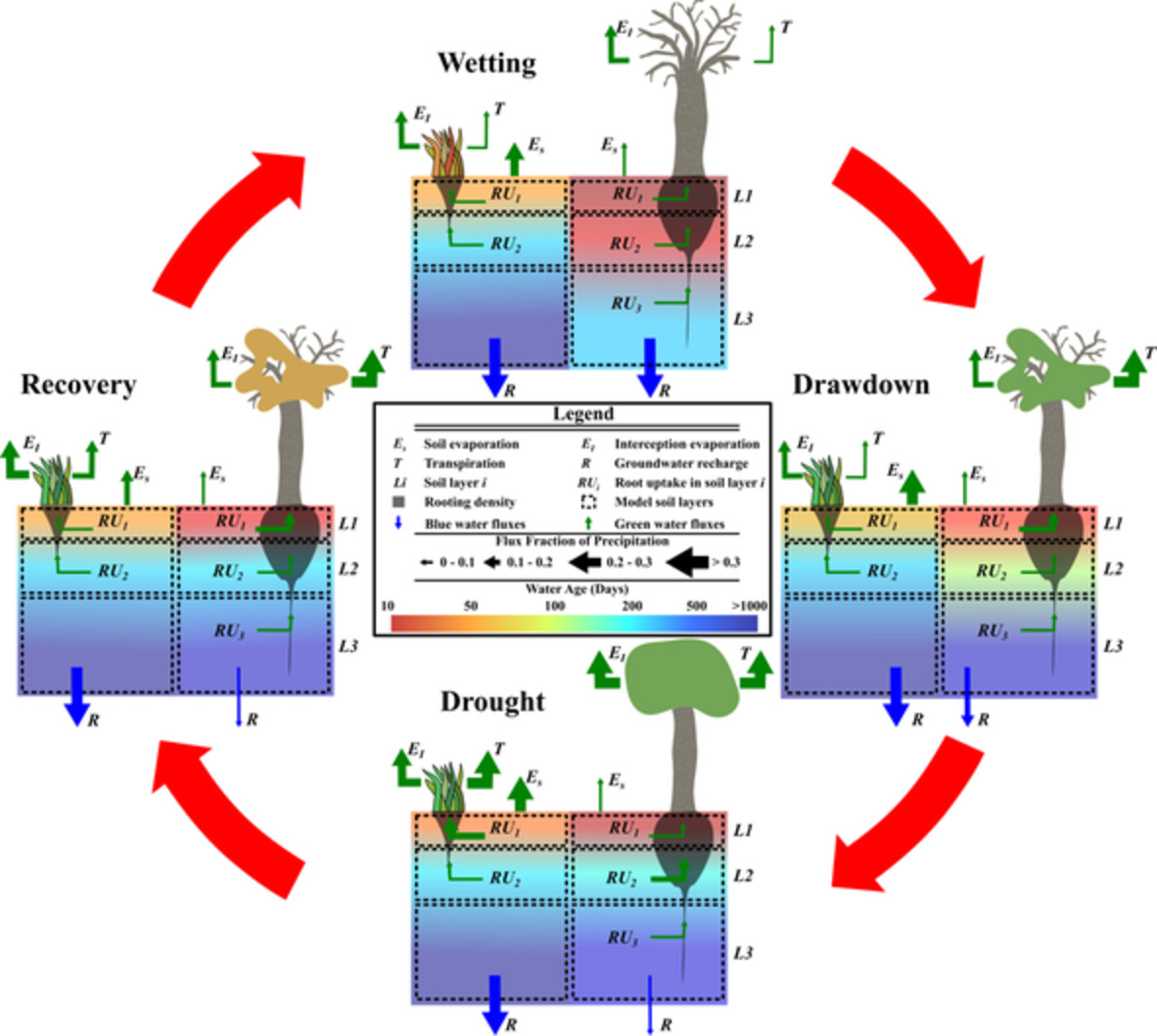Journal list menu
Export Citations
Download PDFs
Table of Contents
Using water age to explore hydrological processes in contrasting environments
- First Published: 15 February 2022
Assessing basin storage: Comparison of hydrometric- and tracer-based indices of dynamic and total storage
- First Published: 19 February 2020
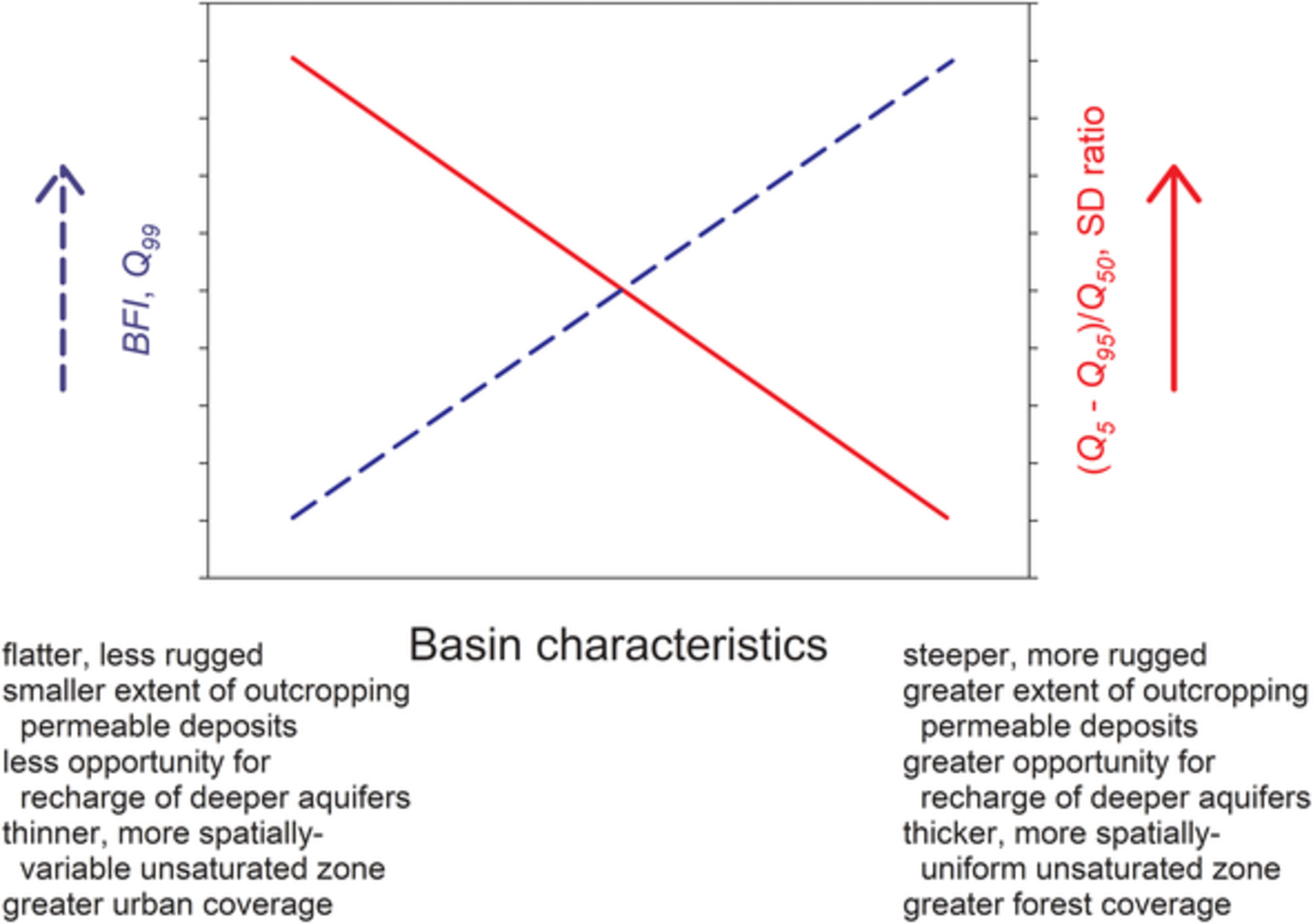
Indices of dynamic (hydrometric-based) and total storage (isotope-based) were strongly intercorrelated for basins draining the Oak Ridges Moraine in southern Ontario, Canada. Storage indicated by these indices was greatest in basins with steeper, forest-covered headwaters underlain by permeable sand and gravel deposits with thick and relatively uniform unsaturated zones. Our results provide the foundation for initial predictions of relative differences in streamflow response to regional changes in climate and land use/land cover.
Water transport and tracer mixing in volcanic ash soils at a tropical hillslope: A wet layered sloping sponge
- First Published: 09 March 2020
Travel times for snowmelt-dominated headwater catchments: Influences of wetlands and forest harvesting, and linkages to stream water quality
- First Published: 14 March 2020
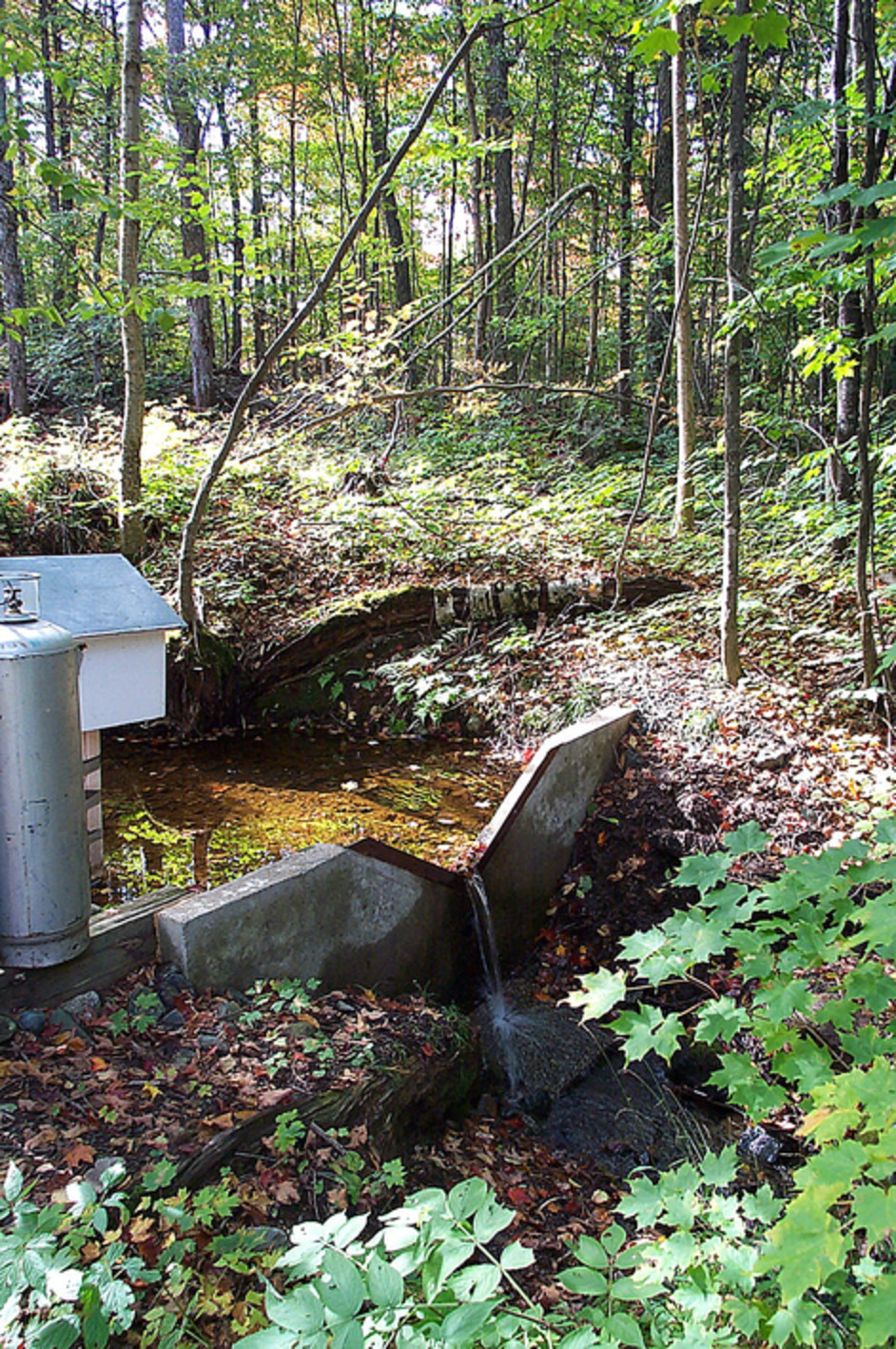
We used 30 years of chloride measurements in rain, snow and streamflow from 12 catchments in the Turkey Lakes Watershed (Ontario, Canada) to estimate mean travel times. We found that wetland cover was associated with shorter travel times during wet periods and longer travel times during dry periods. Forest harvesting reduced mean travel times. Stream water quality was partly related to travel time but also influenced by biological processes.
Lagged rejuvenation of groundwater indicates internal flow structures and hydrological connectivity
- First Published: 29 March 2020
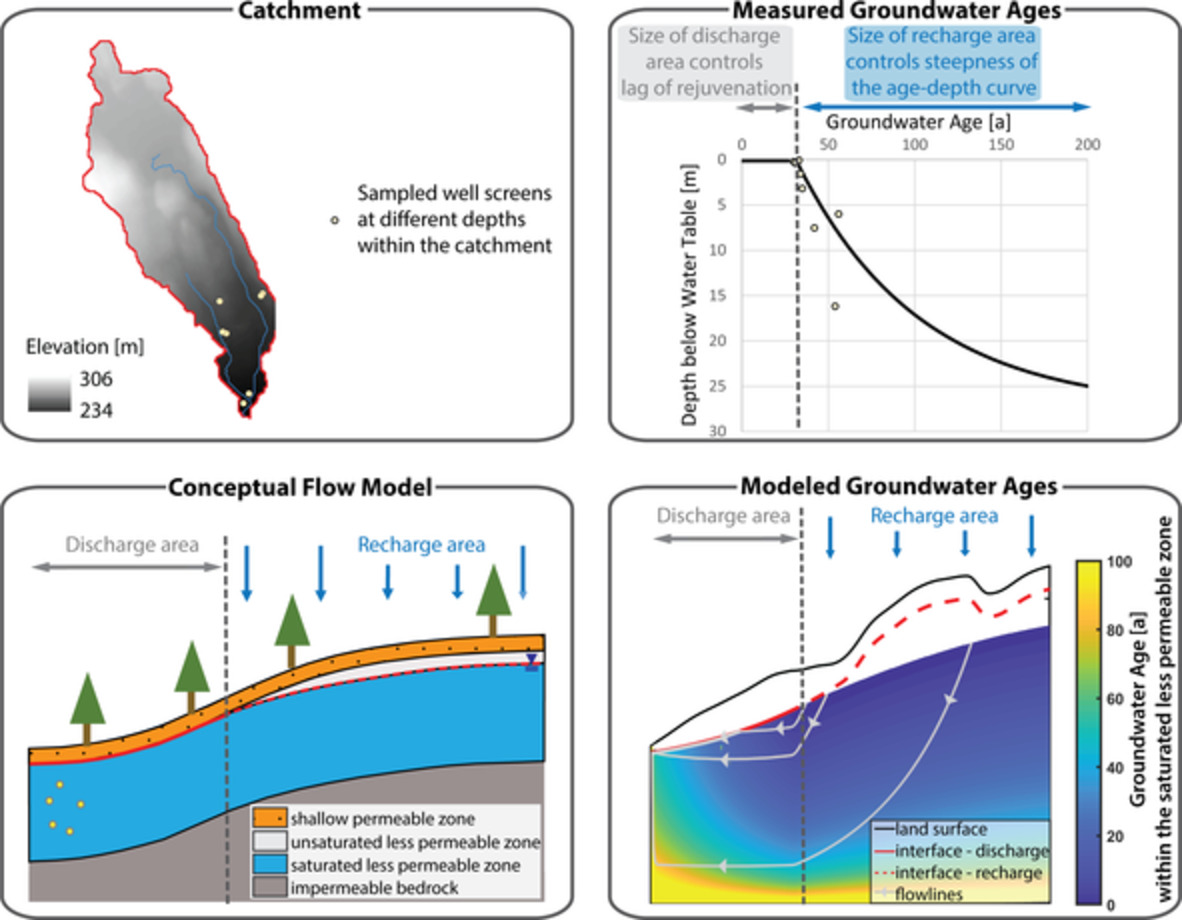
Measured groundwater ages at several locations downslope in different depths yield a single overall groundwater age stratification representative for the catchment. The groundwater age stratification reveals a subsurface discharge zone. By applying a simple analytical approximation, two-measure can be extracted: (1) The extent of the subsurface discharge zone in relation to the recharge zone and (2) the overall recharge volume.
Physically based modelling of water age at the hillslope scale: The Boussinesq age equations
- First Published: 29 March 2020
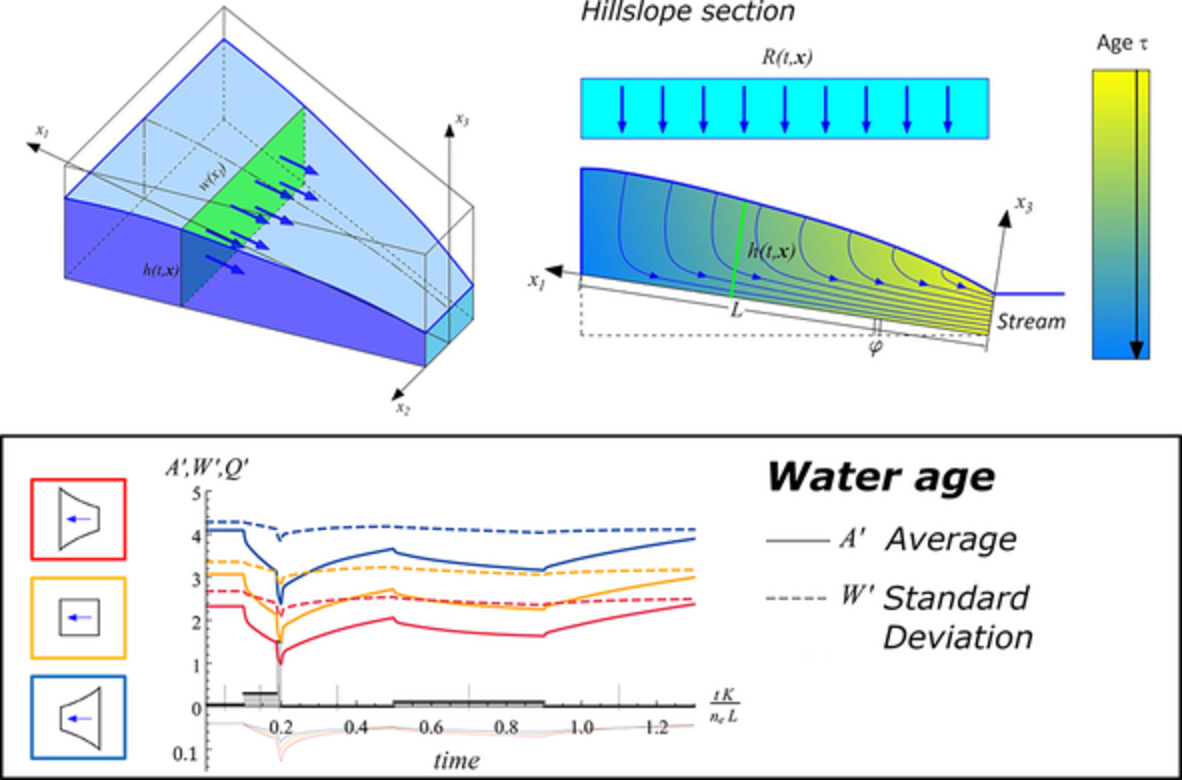
We present a novel model for the characterization of the water or solute age, within a hillslope by its average value and its variance. The methodology which merges the simplicity of solutions one-dimensional with the complexity of physically based models, is suitable for experimental data set analysis and theoretical investigations.
Multimodal water age distributions and the challenge of complex hydrological landscapes
- First Published: 07 April 2020
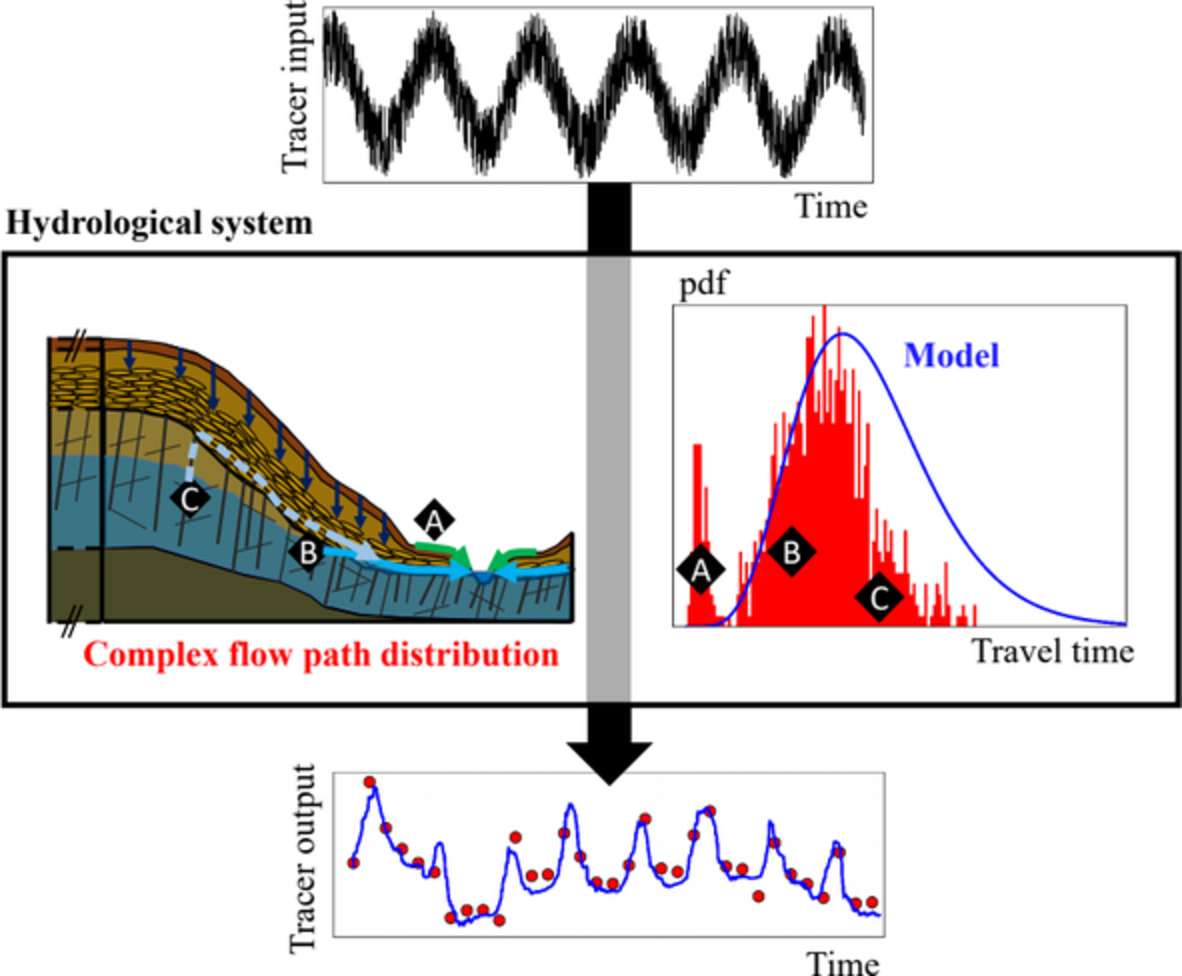
- Combinations of different flow paths or contrasting water velocities can create multimodal age distributions in complex hydrological systems.
- A single tracer measured in inflows and outflows may not allow an accurate determination of all peaks of the age distributions.
- Accurate simulations of tracer concentrations require accurate age distributions in which all peaks are determined.
Nitrate removal and young stream water fractions at the catchment scale
- First Published: 15 April 2020
Catchment storage and residence time in a periodically irrigated watershed
- First Published: 05 May 2020

Isotopic tracers, applied in a small watershed (3.4 km2), indicate that the catchment storage has a preference to release young water for stream flow generation, resulting in contrasting ages for stream water and groundwater of 1.3 ± 0.5 year and 8.2 ± 1.7 year, respectively. Young water fraction, calculated through the seasonal variation of water stable isotopes in precipitation and stream water, yielded a value of 14%, which is an important fraction, considering the dry characteristic of the Mediterranean climate of this area.
Investigating young water fractions in a small Mediterranean mountain catchment: Both precipitation forcing and sampling frequency matter
- First Published: 17 May 2020
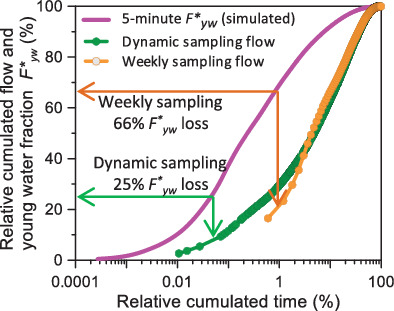
High-frequency discharge-dependent stream water isotope sampling of highly responsive runoff in a Mediterranean headwater research catchment showed that any discrete sampling rate will underestimate young water fractions associated to the highest discharges; this loss may be assessed by using detailed flow records (figure). Our findings show that catchment's young water fraction and its discharge sensitivity metrics highly depend on the dynamic precipitation forcing, which is why young water fractions should be characterized using annual means and variances.
Characterizing the variability of transit time distributions and young water fractions in karst catchments using flux tracking
- First Published: 26 May 2020
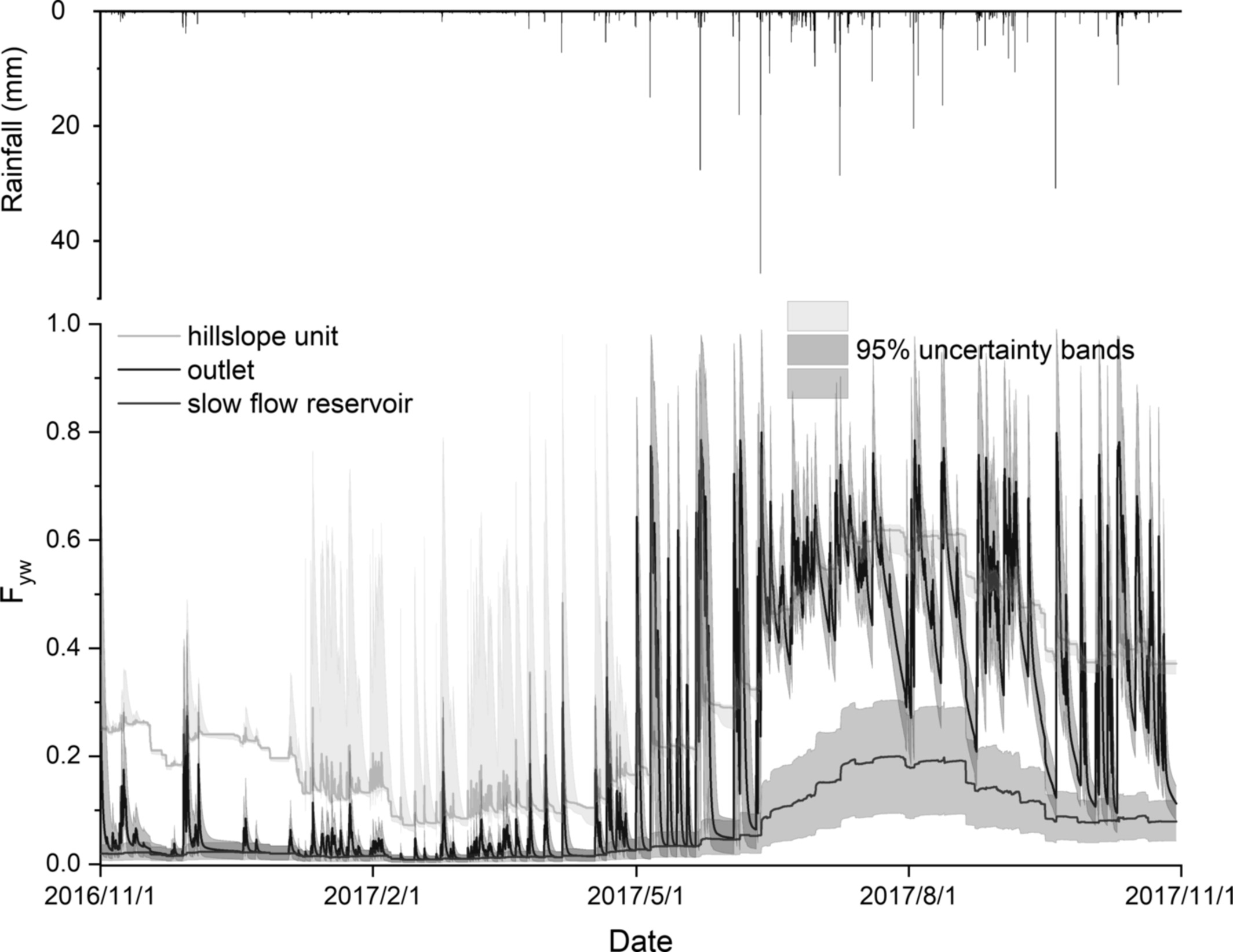
- The tracer-aided hydrological model can be used to assess the spatio-temporal variability of water transit time and young water fractions in karst critical zone.
- Strong hydrological connectivity between the land surface and underground conduits leads the drastic increasement in young water fraction of runoff after heavy rain.
- Strong mixing and drainage of small fractures accelerate the old water release during high flows.
Isotope-aided modelling of ecohydrologic fluxes and water ages under mixed land use in Central Europe: The 2018 drought and its recovery
- First Published: 31 May 2020
The variation and controls of mean transit times in Australian headwater catchments
- First Published: 06 July 2020
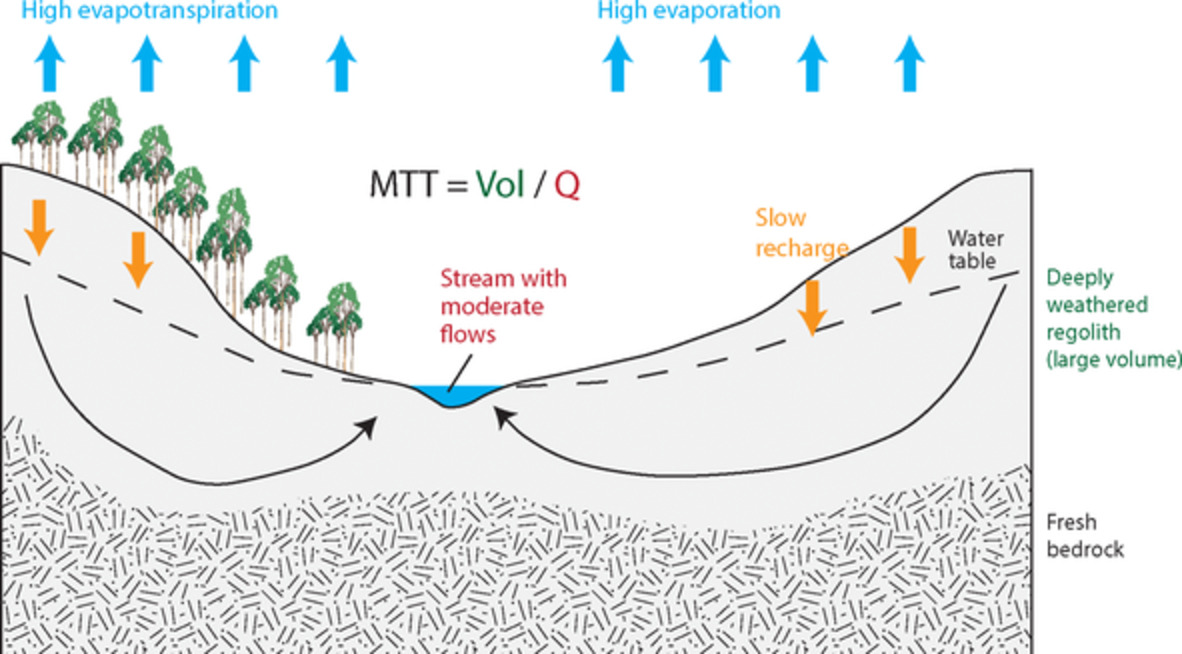
Mean transit times estimated using tritium in Australian headwater catchments at baseflow conditions are years to decades. The long mean transit times result from a deeply-weathered regolith coupled with high evapotranspiration rates. The large catchment storages buffer the streamflow against the impact of short-term climate variability.
Constraining water age dynamics in a south-eastern Australian catchment using an age-ranked storage and stable isotope approach
- First Published: 02 August 2020
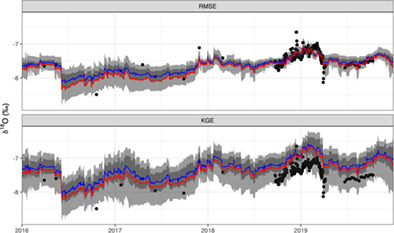
StorAge Selection functions are implemented to investigate age-dependent selection in a eucalyptus forested catchment. A strong preference for young water by evapotranspiration is needed to successfully reproduce oxygen-18 in streamflow. Streamflow selection behaviour from storage indicates a system comprised of several long and short subsurface flow paths.
Snowpack disrupts relationship between young water fraction and isotope amplitude ratio; approximately one fifth of mountain streamflow less than one year old
- First Published: 20 September 2020
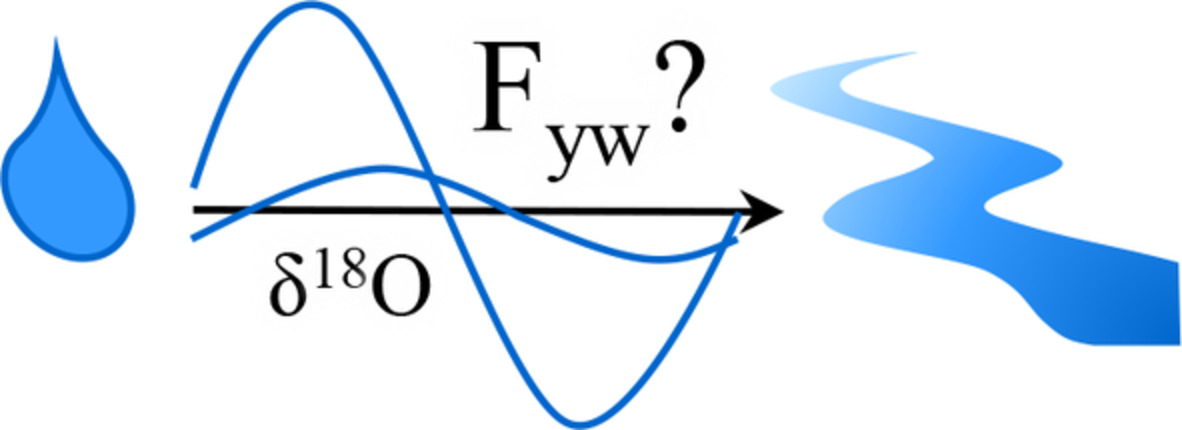
Snowpack disrupts seasonal cycles of isotopic variability, preventing accurate estimation of Fyw in catchments with overwinter snowpack Monte-Carlo simulations produce a range of possible Fyw for a given measured Ar/Ap, and together with an independent estimate, show that ~1/5 of streamflow in the study catchment is less than 1 year old.
Modelling non-stationary water ages in a tropical rainforest: A preliminary spatially distributed assessment
- First Published: 01 October 2020
Seasonal snow cover decreases young water fractions in high Alpine catchments
- First Published: 11 October 2020
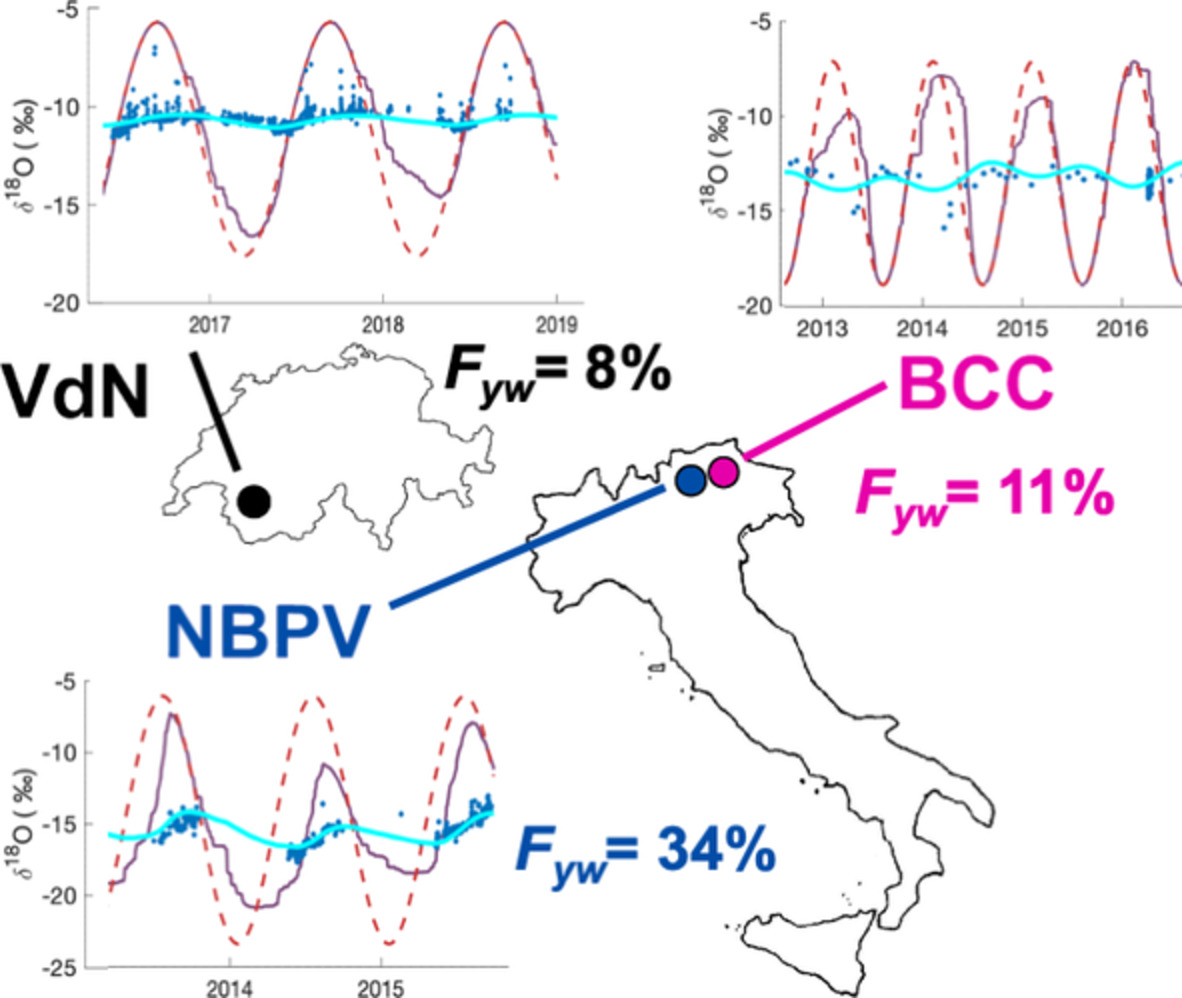
This paper proposes a framework to quantify the young water fraction of streamflow (FYW) in snow-dominated catchments based on stable water isotopes and a simple snow accumulation model. Based on three case studies from the Alps, the challenges and pitfalls of FYW estimation in presence of seasonal snow cover are discussed, with ensuing recommendations for best practices. The results confirm previous findings that seasonal snow cover leads to low FYW.
A preliminary estimate of how stream water age is influenced by changing runoff sources in the Nagqu river water shed, Qinghai-Tibet Plateau
- First Published: 14 September 2021
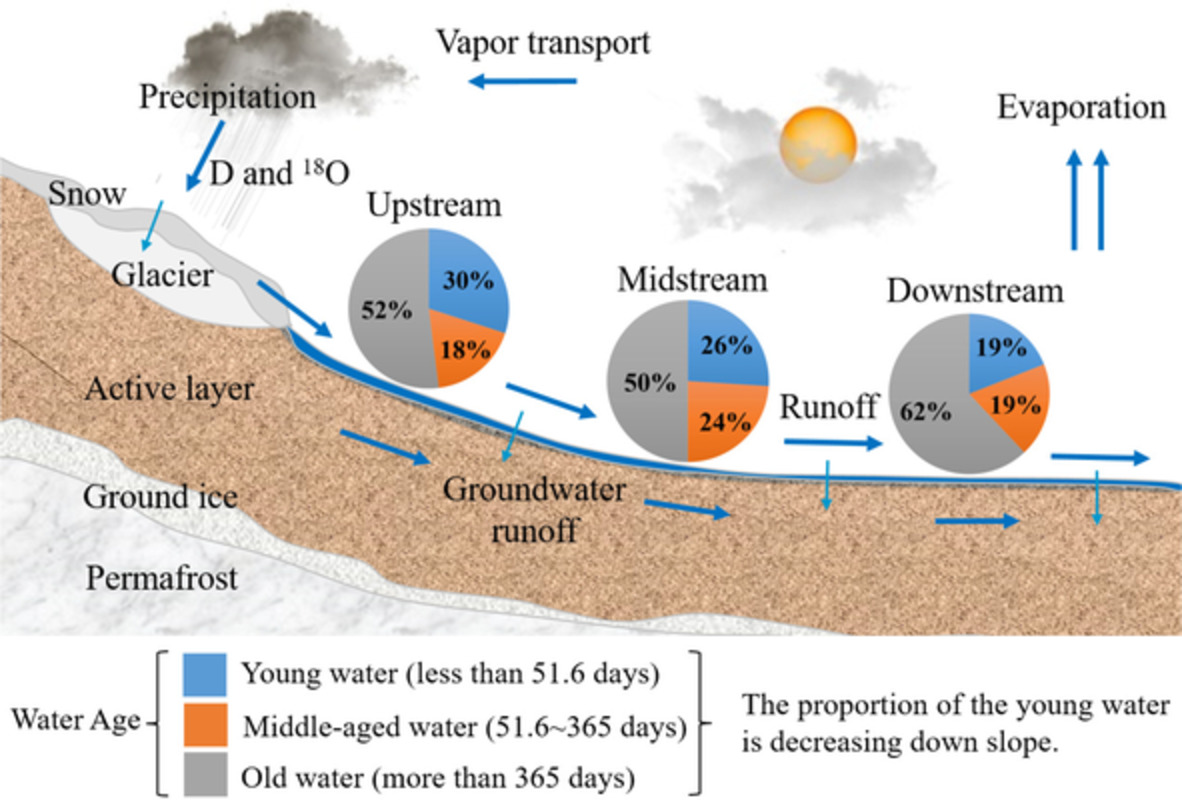
In this study, we used two time thresholds and to divide the stream water age into young water, middle-aged water and old water in runoff and took the Nagqu watershed (with an area of 16 900 km2) as an example to calculate stream water age. The results revealed that in the Nagqu watershed, an average of 23% of the runoff was less than 51.6 days old, whereas an average of 55% of the runoff had ages ranging from 51.6 to 365 days.




